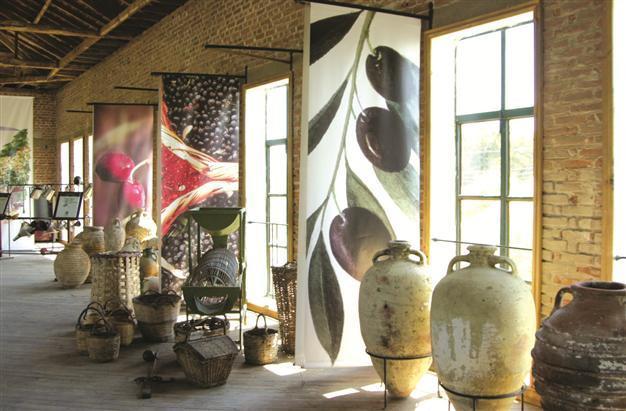Museum whets appetite of locals, visitors in northwest
BALIKESİR - Anadolu Agency

The museum displays wood clamps, oil lamps and amphoras as well as showing olive oil production. AA photo
Visitors to Ayvacık captivated by the northwestern district’s culinary tradition can also peruse a museum devoted to holding the region’s cuisine together: olive oil.
The private museum, the first of its type in Turkey, was established 13 years ago with displays that show how olive oil was produced with traditional methods while also displaying historic wood clamps, oil lamps and amphoras.
The founder of the museum, Haluk Yurtkuran, said he constructed the museum with three friends. “When we saw this two-storey building, we restored it. In this way, the idea to create an area for olive oil culture emerged.”
Before establishing the museum, the four had been producing olive oil in the nearby district of Burhaniye.
Yurtkuran said they showcased production techniques to local and foreign visitors, adding that they were continuing production of olive oil on the lower floor of the museum building with ancient methods. He said those visiting the museum in fall could witness olive oil production with those methods.
Yurtkuran said old storage areas and modern stainless steel containers were displayed together at the entrance of the building, allowing visitors to compare the old and the new. “The second floor of the building, which is the museum section, displays wood clamps, pressers, amphoras and olive oil containers, as well as old oil lamps and written documents such as invoices and dispatch notes,” he said.
The museum founder also said they were attempting to acquire objects related to olive oil.
“Visual and written documents in Turkish and English show how olive oil has been produced through the ages, how it has been domesticated and how it has been presented to the use of people. We have a wood press, which dates back 350 years ago at least. Olive oil used to be kept in amphoras in the Byzantine and Roman periods. One of our diver friends gifted us an amphora found in a shipwreck. It has been documented and registered. They are probably 2,000 year old,” he said.
Raising awareness Noting that the goal of the museum was to contribute to the sustainability of olive oil production, which is the main source of income in the region, Yurtkuran said: “There is olive oil everywhere here, and 90 percent of the people [here] make a living with olives. We want to raise the awareness of consumers toward olives. The museum, inspected by the Culture and Tourism Ministry, has been visited by nearly 60,000 people.” Yurtkuran also said most of those tourists visiting the museum were from Germany, Japan, the Netherlands and the United States.
